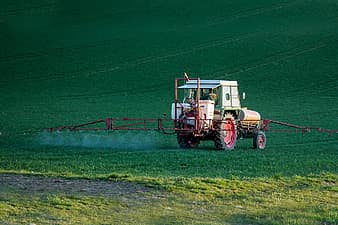
Pests of crops can be prevented or controlled through the following methods:
(1) Physical control; (2) Cultural Control (3) Biological control; (4) chemical control.
- Physical Control: This involves the physical removal of pests by:
- Handpicking of insects and larvae,
- Setting traps to catch rodents.
- Shooting rodents with gun.
- Fencing round the farm with wire nets.
- Cultural Control: This method involves the use of farm practise to prevent or control pest especially on the field. Examples of cultural control include:
- Practicing crop rotation
- Use of pest resistant varieties of crops
- Appropriate tillage operations
- Use of insect traps
- Handpicking and destruction of insects,
- Burning crop residues,
- Timely planting of crops
- Proper weeding or sanitation
- Timely harvesting.
- Close season practices, especially in cotton
- Biological Control: This involves the introduction of the natural enemies of pest to control or the pests population under control. Such enemies eat up or feed on these pests thereby reducing the population of the pest.
- Chemical Control: This involves the use of chemical called insecticides or pesticides to control pests or crop plants.
Definition of Insecticides
An insecticide is a chemical preparation used to control insect pest.
Forms of Groups of Insecticides
There are four major forms or groups of insecticides used in the control of insect pests of crops. These forms or groups and their mode of action are:
Groups mode of action
(i) Powder (i) Contact
(ii) Liquid (ii) Systemic
(iii) Granules (iii) Stomach
(iv) Gas (eous) (iv) Fumigation
These groups of insecticides can be used either directly on insects, seeds, plants and plant parts to check the activities of insects.
Examples of chemicals used to control pests are:
- Pesticides – chemicals to control pests
- Insecticides – chemicals to control insect, e.g. Grasshopper
- Rodenticides – Chemicals to control rodents, e.g. Rats
- Avicides – Chemicals to control birds, e.g. weaver birds
- Nematicides – Chemicals to control nematodes, e.g. Eel worms.
SIDE EFFECTS OF THE VARIOUS PREVENTIVE AND CONTROL METHODS OF DISEASE AND PESTS OF CROPS
The use of various control methods of disease and pests has some side effect. These side effect are follows:
(a) Chemical Method of Control
- Some beneficial insects and soil organisms may be destroyed
- The chemical used may be toxic to man and domestic animals
- It may leave undesirable residue in the environment
- Pests and diseases may develop resistance to chemicals
- Some are washed out of soil to rivers and streams where they can endanger aquatic life and cause pollution
- Empty containers could be a source of poisoning when used as container for consumables.
(b) Biological Methods of Control
- The new organism introduced may start attacking crops which were originally free from attack
- The predators expected to control other may rather feed on other beneficial insects
- The activities of the new organism introduced may cause serious imbalance in the ecosystem.
(c) Cultural Method of Control:
- The use of fire to kill harmful pests may also result in the destruction of other beneficial organism
- Resistant varieties may become adapted to the environment so that the resistance in short-lived where fire is used.
- It care is not taken, fire may spread to other farms.
- The use of fire may cause the destruction and loss of organic matter from the soil
- It may also lead to the destruction of soil structure and cause soil erosion.
Read our disclaimer.
AD: Take Free online baptism course: Preachi.com 